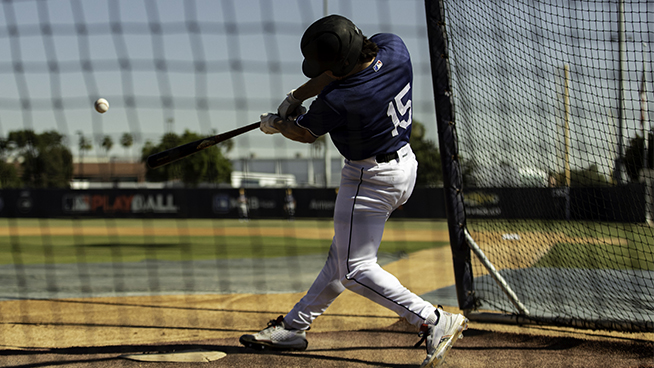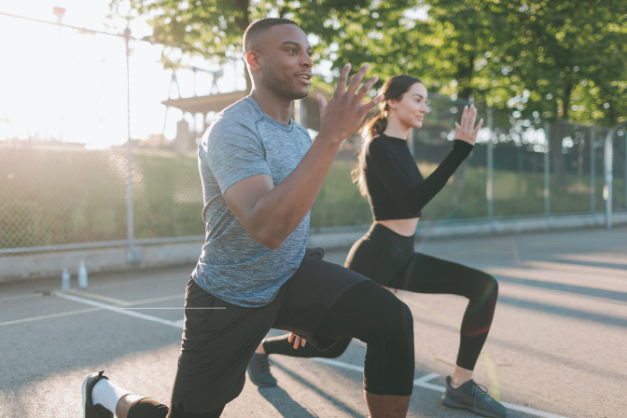When I was in high school, I was one of those student-athletes that thought of themselves more of athlete-student. I was a pitcher on the baseball team, and I was pretty good. Not great, but pretty good. But I wanted to be great. I had dreams of throwing 90 mph and succeeding at the next level. I was willing to work extremely hard to get there.
If you are a baseball athlete, especially as a pitcher, you know how often it is stressed that a pitcher should have big, strong legs. Having a pair of tree trunks for legs is thought to be very helpful at increasing velocity, as well as taking stress off your arm. It doesn’t take a degree in biomechanics to understand this logic. Strong legs can transfer lots of force, and with proper sequencing, can lead to a high-velocity fastball. That’s why the majority of time and movement behind a throw is done with the legs. That is probably a big reason why my chicken legs couldn’t get me to throw my ultimate goal of 90 mph (I did get clocked at 87 thought!), and also probably why I wound up with a screw in my shoulder in college. I worked hard in the weight room, but I wasn’t able to be very consistent, and I never had a proper strength and conditioning program to refer to. I wish I had found one and stuck with it, but hindsight is always 20/20.
Every Athlete Need Strong Legs
It isn’t just baseball that emphasizes this. Just about every athlete, regardless of sport, benefits from well-developed, strong legs. MMA fighter Quinton “Rampage” Jackson, who was once thought to have one of the most powerful punches in the world, knows all about how strong legs can deliver a serious punch. When asked in a “Sports Science” ESPN interview how he punches so hard, his simple response was, “I put my a** into it.” Only he meant it. He explained how he gets his power by setting up his punches with the legs behind him. His strong glutes transfer an unbelievable amount of force into his fist. Fun fact, according to the show, his punch generated 1,800 pounds of force, which is like a young hippo sitting on you, and twice the force generated by two colliding sumo wrestlers.
The Glute Bone is Connected to the Shoulder Bone
Strong legs are incredibly important whether you want to throw a 95 mph fastball or be able to punch like Miley Cyrus’ wrecking ball. Why the glutes specifically, you say? The glutes are the biggest and strongest muscles you have. They generate and transfer force to both the upper and lower body. Further, they have what is called a contralateral relationship with the shoulders. The muscle fibers of the glutes are diagonal, pointing directly to the opposite shoulder. This means the right glute muscle is pointed to the left lat muscle, which is pointed to the left shoulder. These groups of muscles work together to create a direct line of force.
This is why a right handed pitcher lands on his left leg. When the leg lands, it creates an instantaneous, massive contraction and force transfer from the left leg, and upwards to the right arm, delivering a powerful throw.
This is why a boxer will have his left leg forward when throwing a right punch, and a left leg jump propels a right-handed layup. You get the idea. The shoulder has a direct relationship with the opposite glute, and that’s where a lot of force and velocity can come from for rotational athletes. Without strong glutes, there’s a lot of performance enhancement left on the table.
Strong Glutes Reduce Injury
Earlier I said conventional baseball wisdom tells us that strong legs help remove stress from the arm. That is true as well. We’ve shown how the glutes transfer force to the opposite shoulder, which is useful for performance. Given the fact that the glute is the biggest and strongest muscle in the body, it makes sense that the glutes should bear the load of generating power in the body. The more the big, powerful glutes take control. The less the more vulnerable parts have to take on, such as the lumbar spine, shoulder, and elbow. This of course, leads to less arm and back-related injuries.
A study out of New Zealand demonstrated how glute training led to reduced back injuries in a group of Spanish professional handball players. Throughout a 32 week season, the athletes performed a dominant glute workout twice per week. When compared to an experimental season when the athletes didn’t perform glute-based workouts, the frequency and duration of low back injuries were much lower when done with the workouts.
Scientific studies are great and all, but sometimes you can learn a lot from just observing. All great rotational athletes have strong, powerful legs. They may not always have massive limbs, but they are explosive and can propel their bodyweight with great speed and power. That speed and power comes from the legs that move them. You will often see pitchers, boxers, MMA fighters, sprinters, even golfers with thick, dense glutes, and that’s no coincidence.
Glute Exercises
There are literally thousands of exercises out there that help strengthen the glutes. Still, a handful are proven to especially target the glutes, giving you the biggest bang for your badonkadonk. Squats, reverse lunges, hip thrusts, resisted side steps and clamshells are among the best exercises to develop glutes to help dominate the competition.
- Great Glute Exercises You’ve Never Tried: Swiss Ball Bridge With Band Abduction
- 2 Glute Exercises to Increase Your Running Speed
Did you enjoy the article ‘Strong Glutes are Critical for Rotational Athletes’? If so, check out more of our articles HERE.
Original article posted on stack.com



